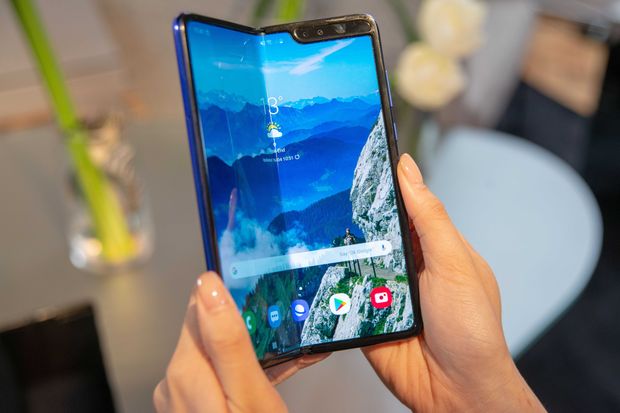I’ll be the first to admit it; I predicted that folding screens would never make it to the mainstream. I genuinely thought the technology wasn’t ever going to get to a point where screens could be folded and used daily by consumers. I was right, up until last year, and now, I have been proved very wrong. With a crop of new foldable smartphones on the horizon, all set to be released in 2020, and some you can buy right now, maybe this will be the year this technology finds it stride.
In the fold.
We all are familiar with Samsung’s range of unlocked mobile phones. Samsung is a driver of technology and continuously pushes the boundaries of designs and functions. Samsung has been developing foldable screen technology for some time and obviously sees merits in such technology. While we got glimpses of this technology, it seemed unlikely we would see it hit the market any time soon.
Then the Fold was released.
This foldable smartphone costs a ludicrous amount of money and does exactly what Samsung promised. It’s early days in the world of consumer folding screens, but the future looks bright. The Fold is remarkedly polished for a first-generation device, and the phone folded out in tablet mode is truly impressive.
On the Razrs edge
Another foldable phone you can buy right now (if you have deep pockets) is Motorola’s Razr. Anyone who grew up in the ’90s will remember the Razr moniker from Motorola’s iconic flip phone released in 2003. While not as expensive as Samsung’s Fold, it still carries a whopping price tag and will only entice those with nostalgia or extreme curiosity.
Pros.
Despite my negative outlook, folding screens have arrived. Why would manufacturers choose this technology? Surely its cheaper and easier just to stick with current smartphone layouts? Well, yes, it is. So, what’s the trade-off?
The most significant benefit of a folding screen is portable screen real estate. For avid consumers of media, a folding screen makes a whole lot of sense. Imagine being able to fit an iPad sized screen in your pocket, with the Samsung Fold that is now possible.
Cons.
Cost is the biggest drawback for folding screens, not only in the manufacturing stage but also when it comes to repairs and accessories. Fixing your broken folding screen is going to be pricey, and finding a case for your folding phone is going to be nigh on impossible.
Apart from costs, folding screens suffer from other problems, too; the flexible material needed to produce folding screens is also highly susceptible to scratches. There have been numerous reports of Galaxy Folds being damaged when used in conjunction with Samsung’s own S-Pen.
Worth it.
On paper at least, folding screens are still a relatively restrictive market. Expensive and fragile, if you were after a powerful flagship phone, why wouldn’t you just buy an s20 Ultra? On paper, a folding screen is a bad idea, but in practice, it’s utterly refreshing. No stats are going to convey the satisfying feeling of hanging up a call by folding the phone in half.
In the early 2000’s flip phones briefly took over the world, with Motorola’s classic v3 Razr becoming the coolest phone of all time. Flipping your phone open to answer a call made you feel like a rockstar, something that the new generation of folding phones captures perfectly.
Folding phones, gold, or garbage? Well, it’s going to be hard for me to say this, but I think we are witnessing a rebirth of the folding phone. We have always loved folding phones. The next logical step was folding screens, and the technology has finally matured. With handsets like the 2019 Razr and Samsung’s fold bearing the banner, I’d have to say folding screens are gold.

Leave a Reply